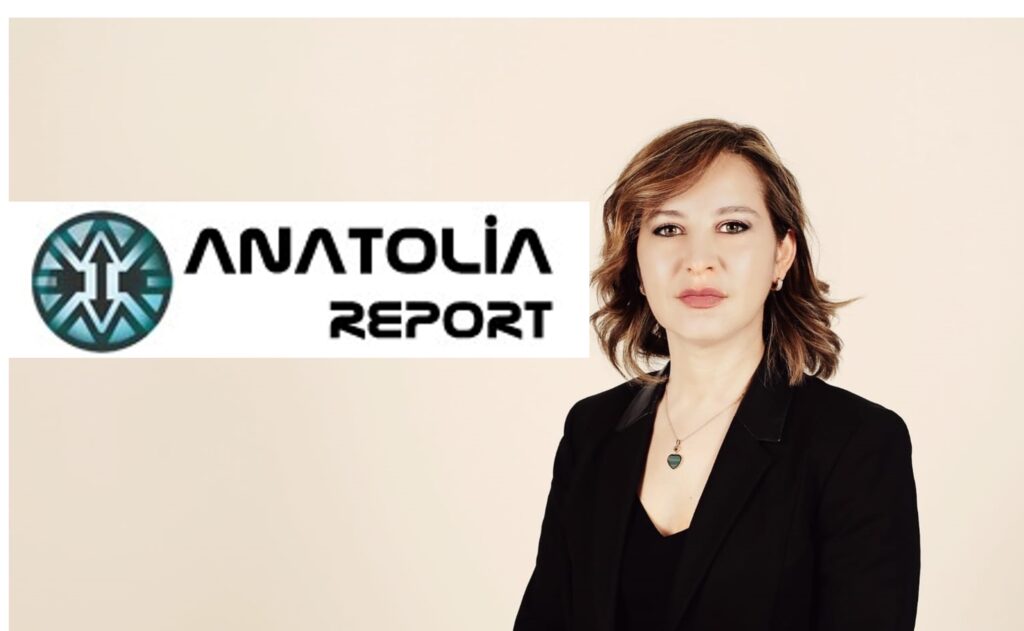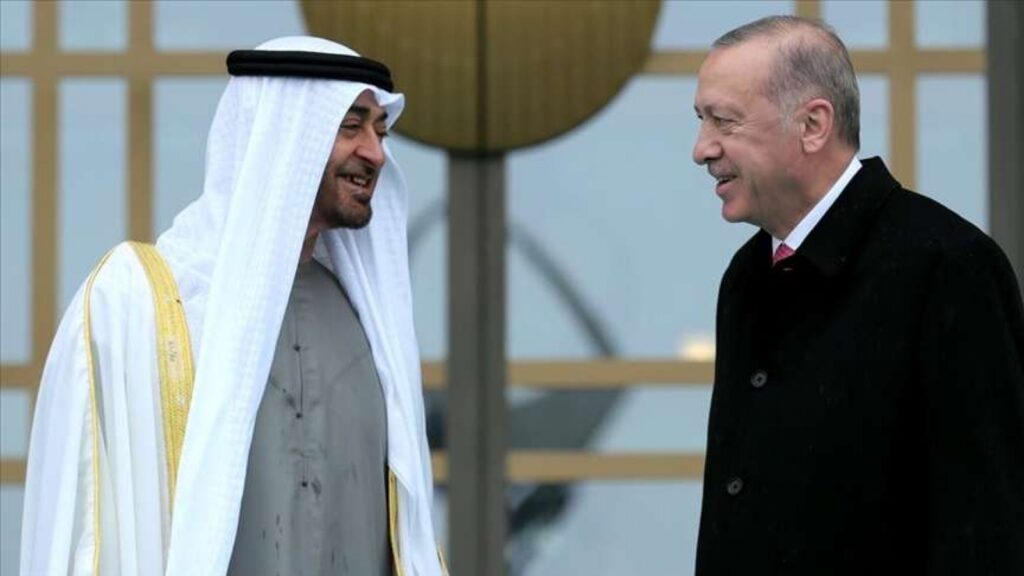Crisis in the Middle East works against the Turkish economy

By Fatih Özatay
Yetkin Report
February 2024
Turkish economy in terms of oil and financing costs as well as the investment climate.
The chaos in the Middle East prevails as the İsrael-Palestinian conflict has merged into a war once again after Hamas attacked Israel on October 7. Unfortunately, the bombardments and clashes last in its second week with a rising humanitarian cost.
This environment, if prolonged, will have negative effects on Türkiye, which had been on the brink of a balance of payments crisis due to its irrational economic policy for a considerable period and has been struggling to get back on her feet by returning to “rational” policies after the May elections.
There are two main channels of impact.
Oil and financing
First, the energy costs: The price of crude oil -Brent barrel- was around 72 US Dollars at the end of May and rose to 94 dollars by the end of September. Before the Hamas attack, it had fallen to 84 dollars. As of the evening of October 20, it was slightly above 92 dollars; there is no significant impact yet. Nonetheless, if it increases further from its already high levels, the current account deficit will deteriorate, making it challenging for Türkiye, which aims to ease its financing situation.
Second, the financing channel: In the first eight months of 2023, Türkiye recorded a current account deficit of 43.1 billion dollars. Only 21.6 billion dollars of this deficit (financing need) was financed by standard capital inflows – foreign direct investment, portfolio inflows, and loans. The rest was financed by CBRT reserves (18.6 billion dollars) and the net errors and omissions account (3.1 billion dollars), which includes money inflow from unknown origin.
There was a similar picture in 2022. This is the phenomenon I have above mentioned, ‘coming to the brink of a balance of payments crisis’. This is the main issue that the rationalization program must solve.
Middle East chaos and the IMF
However, if the environment in the Middle East after the Hamas attack becomes more chaotic and prolonged, capital inflows to Türkiye through standard channels may decrease due to a decline in the international appetite for risk-taking. In addition, depending on Türkiye’s position, would the lifeblood of the bilateral agreements it had previously made with the Gulf countries diminish? I will leave the answer to this question to the experts; however, let me emphasize why this financing was going through a narrow and bumpy road – with some skidding – before the Hamas attack.
On October 6, the IMF published a short assessment note on Türkiye which released that the IMF wants to support the ‘rationalization’ program being implemented in Türkiye. However, while expressing its endorsement for the ‘right direction’ decisions being taken, the IMF also gives warnings between the lines. It emphasized the following point as the main domestic risk that could disrupt the positive trend: “The balance of risks is to the downside. On the domestic front, the key risk is that the policy shift now underway loses its strong momentum, eroding confidence and leading to increased FX demand and reserve drain.”
Many remain cautious
On October 9, the Financial Times published an assessment of the Turkish economy, which concluded with a Fitch credit rating agency expert saying: “It will take time to see if this time is different . . . because we’ve had so many reversals in the past.”
Shortly after, the press published excerpts from a report summarizing the views of participants in Minister Mehmet Simsek’s meetings with representatives of major international financial institutions in London. According to Bank of America’s report, the fund managers who attended the meeting thought it was too early to reinvest in Türkiye.
By the way, I draw your attention to the emphasis on ‘re-invest”. In the period following 2018, when a crisis was triggered by US President Donald Trump’s tweets, there were not many foreign investors left in Türkiye. In one of his first statements after he took office, Minister Mehmet Şimşek implied that the monetary policy of that period was “not rational.”
Turkey has a large economy; if reasonable economic policies are implemented and if there is no turmoil in the global financial system, it is expected to have no financing problems. Moreover, if a reasonable economic program has a structural pillar, the need for financing will gradually decrease.
Reasons for the concerns
So why is the road back to rationality bumpy? Why are there doubts that there is no going back?
The first reason is, of course, the recent past. With the appointments of Naci Ağbal as the Governor of the Central Bank (CBRT) and Lütfü Elvan as the Minister of Treasury and Finance, it was thought that the path to both monetary discipline and fiscal discipline had begun. Unfortunately, the process ended quickly. Not only did it end, but also it was followed by a succession of decisions that exploded the exchange rate, risk, and inflation. Some are for the idea that this is likely to happen again. Moreover, there is also the concern of whether there will be a deviation from reasonableness as the local elections approach.
Second, fiscal discipline deteriorated significantly ahead of the May 2023 elections. Significant decisions were taken to increase the budget deficit. On the other hand, the physical destruction caused by the devastating February earthquake is only possible with expenditures from the budget, which significantly increases the budget deficit.
Inflation expectations
These two effects apply not only to the rest of 2023 but also to 2024 and 2025 in part. To bring the budget deficit down to more acceptable levels, some decisions were taken after the election, especially to increase tax revenues. Despite them, budget deficits in 2023 and 2024 will still be high. This risk is mentioned both in TEPAV’s Türkiye’s Economic Outlook Report published at the end of September and in the IMF assessment note mentioned above. In short, it may be required to take additional measures, let alone reduce the budget deficit to the promised level.
Third, inflation is quite high. Moreover, annual inflation is expected to increase, reaching over 70 percent in June 2024. The CBRT announced its end-2023 forecast at 58 percent in the third Inflation Report published at the end of July.
The graph on page 57 of the same report exhibits that inflation will rise further towards mid-2024. Likewise, in the Medium-Term Program (MTP) announced at the end of September, the end-2023 forecast was raised to 65 percent. Given these values, an inflation rate above 70 percent in June 2024 would not be surprising.
Policy rate to be raised to 40 percent
There is not much a monetary policy can do to significantly reduce inflation a few months ahead. Nonetheless, with the right decisions, it can reverse the rising trend of inflation, especially from the spring of next year. The question then is what the right decisions mean. The end-2024 inflation forecasts should be a signpost for the monetary authority for the right path. Both the CBRT’s and the MTP’s end-2024 inflation forecasts are 33 percent. In the aforementioned reports, TEPAV and the IMF forecast end-2024 inflation at 39 percent and 46 percent, respectively.
Consequently, the policy rate, which is currently 30 percent, needs to be raised to at least 40 percent as soon as possible. Is it possible? Instead, will interest rate hikes be spread over time? Nonetheless, spreading over time has costs, and creates the impression of chasing inflation rather than falling it. It augments the risk of raising the required interest rate level. It leads to resorting to unpalatable side-tracks for financial stability – or rather, postponing the elimination of old side-tracks. As a result, policy-deposit-credit rates are unable to move hand in hand. And consider that inflation is expected to rise rather than fall until June 2024.
Unfavorable external conditions
Fourth, external conditions are not functioning in our favour. At the beginning of this article, I mentioned the possible consequences of the Israeli-Palestinian crisis in the Middle East that started with the Hamas attack. There are other issues as well. Globally important central banks have raised policy rates to quite high levels. They are expected to rise further rather than lower for a certain time. This is not a welcomed development for countries like ours that require financing. There is also the risk that the 2024 growth in the European Union, where we export significantly, will fall below the already low 2023 growth level. This is what the IMF’s newly released World Economic Outlook Report says.










